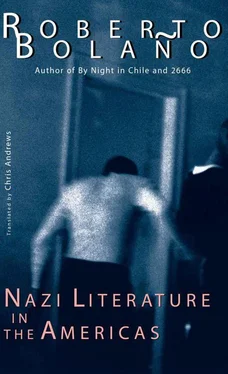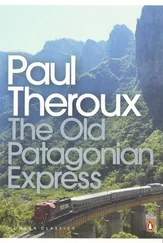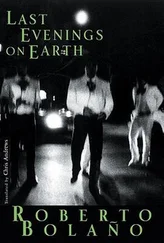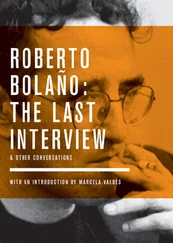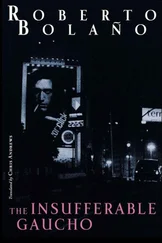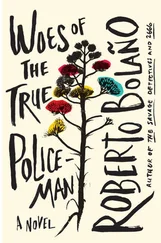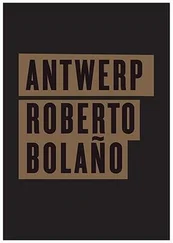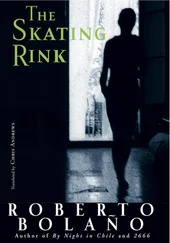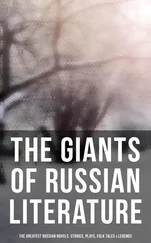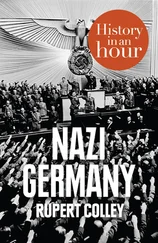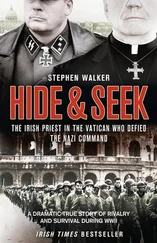A revised and enlarged edition of Poe’s Room appeared in 1947. It included a reproduction of Franchetti’s painting, showing a view of the room from the doorway. The sleeping man is dimly visible in profile. It could, in fact, be Sebastian Mendiluce. It could also be any heavily built man.
In 1948, while continuing to publish Modern Argentina , Edelmira launched a new magazine, American Letters , giving her children, Juan and Luz, editorial control. Shortly afterward, she left for Europe, where she would remain until 1955. It has been suggested that an irreconcilable enmity between Edelmira and Eva Peron was the cause of this long exile. Nevertheless, many photographs from the period show the two women together at cocktail and birthday parties, receptions, opening nights, and sporting events. Evita, in all likelihood, could not get beyond page ten of Poe’s Room , and Edelmira would certainly not have approved of the first lady’s social background, but documents and letters written by third parties indicate that they had embarked upon shared projects, such as the creation of a major museum of contemporary Argentinean art (to be designed by Edelmira and the young architect Hugo Bossi), including artist residences, with a full catering service, a feature quite unique among the great museums of the world, the aim being to facilitate the creative work — and daily life — of young and not-so-young exponents of modern painting, and consequently to prevent their emigration to Paris or New York. Some people claim to have seen a film script drafted by the two ladies, about the life and misfortunes of an innocent young Don Juan (to be played by Hugo del Carril), but like so many other things, the draft has been lost.
What we know for certain is that Edelmira did not return to Argentina until 1955, by which time the rising star in literary Buenos Aires was her daughter, Luz Mendiluce.
Edelmira’s later years were not prolific. Apart from her Collected Poems (the first volume appeared in 1962, the second in 1979), she was to publish only three more books: a volume of memoirs, The Century as I Have Lived It (1968), written with the help of the ever-faithful Carozzone; followed by a collection of very short stories, Churches and Cemeteries of Europe (1972), distinguished by the author’s abundant common sense; and, finally, a gathering of unpublished early poems, Fervor (1985).
In her roles as patroness of the arts and promoter of young talent, however, Edelmira remained as active as ever. Countless volumes included a foreword, a preface or an afterword by the widow Mendiluce; she also personally financed the first editions of innumerable works. Of the books for which she wrote prefaces, two deserve a special mention: Stale Hearts and Young Hearts by Julián Rico Anaya, a novel which provoked a heated controversy both in Argentina and abroad on its publication in 1978, and The Invisible Adorers , by Carola Leyva, a collection of poems intended to put an end to the sterile poetry debate that had been going on in certain Argentinean circles since the Second Surrealist Manifesto . Among the books she subsidized, two titles stand out indisputably: The Kids of Puerto Argentino , a perhaps somewhat exaggerated memoir of the Falklands War, which catapulted the ex-soldier Jorge Esteban Petrovich to literary prominence, and The Darts and the Wind , an anthology of work by young, well-bred poets whose aesthetic objectives included avoiding cacophony, vulgar expressions, and ugly-sounding words, and which, with its preface by Juan Mendiluce, sold unexpectedly well.
Edelmira spent the last three years of her life on her ranch in Azul, either in the Poe room, where she would doze and dream of the past, or out on the broad terrace of the main ranch house, absorbed in a book or contemplating the landscape.
She remained lucid (or “furious,” as she liked to say) to the end.
Buenos Aires, 1920–Buenos Aires, 1991
As the second child of Edelmira Thompson, Juan realized at an early age that he could do whatever he liked with his life. He tried his hand at sports (he was a passable tennis player and an appalling race-car driver), patronized the arts (or rather fraternized with bohemians and criminals, until prevented from doing so by his father and his vigorous older brother, whose prohibitions were backed up by threats and occasional violence), and studied law, before turning to literature.
At the age of twenty he published his first novel, The Egoists , a tale of mystery and youthful exaltation, set in London, Paris and Buenos Aires. The events are precipitated by an apparently insignificant occurrence: a mild-mannered family man suddenly shouts at his wife, ordering her to take the children and leave the house immediately, or put them in a room and lock the door. He then locks himself in the bathroom. After an hour the woman emerges from the locked room in which she has obediently taken refuge, goes to the bathroom and finds her husband dead, with a razor in his hand and his throat slit. This suicide, which seems at first an open and shut case, is investigated by a Scotland Yard detective with a passion for spiritualism, and by one of the dead man’s sons. The investigation takes more than fifteen years and serves as a pretext for introducing a gallery of characters, including a young French neo-royalist and a young German Nazi, who are allowed to discourse at length and seem to serve as the author’s mouthpieces.
The novel was a success (by 1943, four editions had sold out in Argentina, and sales were strong in Spain, as well as in Chile, Uruguay and other Latin American countries), but Juan Mendiluce decided to forego literature in favor of politics.
For a time he considered himself to be a Falangist and a follower of José Antonio Primo de Rivera. He was anti-USA and anti-capitalist. Later he became a Peronist and held important government posts at the capital and in the province of Córdoba. His career in public service was impeccable. With the demise of Peronism his political inclinations underwent a further transformation: he turned pro-USA (in fact, the Argentinean Left accused him of publishing twenty-five CIA agents in his magazine — an exaggerated figure, by any reckoning), became a partner in one of the major legal firms in Buenos Aires, and was finally appointed ambassador to Spain. On his return from Madrid he published a novel, The Argentinean Horseman , in which he bewailed the spiritual poverty of the contemporary world, the decline of piety and compassion, and the incapacity of the modern novel, particularly in its crude and aimless French manifestations, to understand suffering and so to create characters.
He became known as the Argentinean Cato. He fought with his sister, Luz Mendiluce, over control of the family magazine. Having won the fight, he tried to lead a crusade against the lack of feeling in the contemporary novel. To coincide with the publication of his third novel, Springtime in Madrid , he launched a campaign against francophilia, the cult of violence, atheism and foreign ideas. American Letters and Modern Argentina served as platforms, along with the various Buenos Aires dailies, which were keen to publish, although sometimes flabbergasted by, his denunciations of Cortázar, whom he described as unreal and bloodthirsty, and Borges, whose stories, so he claimed, were “parodies of parodies” and whose lifeless characters were derived from worn-out traditions of English and French literature, clearly in decline, “repeating the same old plots ad nauseam.” His attacks took in Bioy Casares, Mujica Lainez, Ernesto Sabato (who, in his eyes, personified the cult of violence and gratuitous aggression), Leopoldo Marechal and others.
Читать дальше
